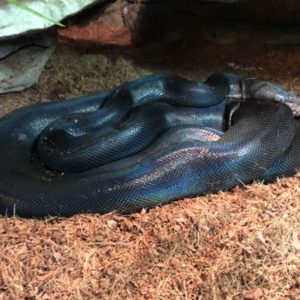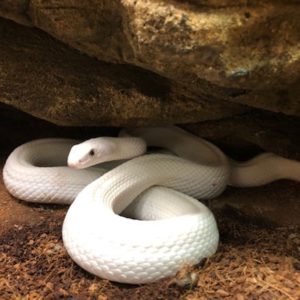The wait is over. There’s new additions to the families of rattlesnakes in a Colorado mega-den.
The northern Colorado rattlesnake den complex, described as a “mega-den,” is one of two monitored by researchers at California Polytechnic State University in San Luis Obispo. With the arrival of baby rattlesnakes, now is a good time to check out the Project RattleCam livestream feed for the Colorado den, says Emily Taylor, the project leader and a Cal Poly biological sciences professor.
“Baby rattlesnakes will be basking with their mothers in this communal birthing area for … 1-2 months before snakes enter winter hibernation,” Taylor told USA TODAY.
One photo shared with USA TODAY showed a rattlesnake named Thea babysitting other baby snakes. “We have seen babysitting many times on the RattleCam,” said Max Roberts, one of biological sciences grad students in Cal Poly’s Physiological Ecology of Reptiles Laboratory helping oversee the project.

“Note that Thea has a very large, thick body in the photo, so we know that it is pregnant and that the babies snuggling with her are not her own,” Roberts told USA TODAY.
More about the baby rattlesnakes on the Colorado RattleCam
The first baby rattlers were spotted on Aug. 22 “and we have been seeing more and more babies as females continue to give birth over the last few weeks,” Roberts said. “We expect the last of the pregnant females to give birth in early to mid-September, although the snakes will likely stay surface active through early October.”
It’s uncertain how many snakes inhabit the den, Roberts said. “We don’t know the total number of pregnant females, (so) we can’t say for sure how many babies will be born this year,” he said.
“On average, each female gives birth to around 8 pups, so that will end up being a lot of baby snakes,” Roberts said. “The full number of snakes with babies included is likely not 2,000 and is closer to 1,000 or several hundred.”





